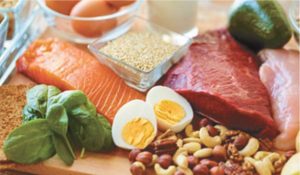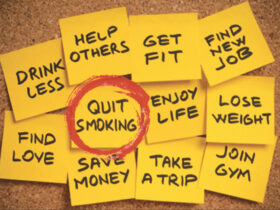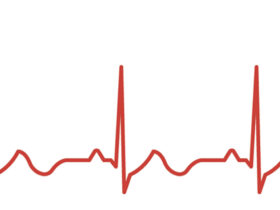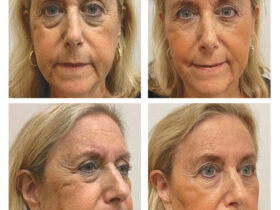By Cederquist Medical Wellness Center
 Research shows that the majority of us have only a sketchy grasp of how nutrition relates to how our bodies function and we often regard nutrition as a minor factor in our overall health.
Research shows that the majority of us have only a sketchy grasp of how nutrition relates to how our bodies function and we often regard nutrition as a minor factor in our overall health.
The media blitz about the American obesity crisis is putting new attention on the nation”s dietary problems, but it isn’t necessarily providing the re-education we need to help us overcome them.
Research shows that the majority of us have only a sketchy grasp of how nutrition relates to how our bodies function and we often regard nutrition as a minor factor in our overall health.
Of course, nothing could be further from the truth, but even the most detailed knowledge isn’t enough to correct or even prevent obesity or bad eating habits.
Even so, when it comes to your health, ignorance never leads to bliss, and the more you know, the better equipped you are to adjust your own eating habits for better health outcomes.
Here, then, is the first of three pieces offering a simple look at the macronutrients, protein, fats and carbohydrate, the fundamental nutritional building blocks. You may be surprised by what you don’t know.
Protein First
Of all the nutrients your body needs, protein is the most vital.
Why? Because it is absolutely necessary to build and maintain all your body”s structures, not only muscles, tendons and ligaments, but also your circulatory system, brain, organs, immune system and skin.
As old cells slough off these various structures, replacement protein is constantly needed to build and repair them. If fresh protein is not available more or less continuously, the structures start to break down.
Myths About Protein
Many people have false ideas about what protein can do. They expect protein to give them big muscles, stamina and athletic prowess. They think that if a little protein is good, a lot must surely be better.
But eating a hearty serving of red meat every night will not make you robust. The average 150-pound man cannot use all the protein in an 8-ounce dinner steak to meet his daily requirement, even if he eats no other protein foods all day long.
That’s because the body can utilize only four to eight ounces of protein at a time. The rest will be converted into carbohydrate for immediate energy or stored as fat, because, unlike fat and carbohydrate, protein can’t be held in reserve in the body. You cannot load up on protein Monday and store it for use on Tuesday and Wednesday. In fact, the protein you eat at breakfast is pretty well used up by dinner time.
Protein in weight-loss
It would be nice if your body burned only the excess fat you are anxious to shed. Unfortunately, it doesn’t work that way.
Even to function at a minimal level, our bodies first use available carbohydrate, then protein, and last turn to our fat stores for energy. The very process of burning body fat requires the presence of carbohydrates. If there are insufficient carbs and protein in the food you eat, your body breaks down lean body tissue for the proteins, and converts them to carbohydrate for energy.
That’s why people on some low-calorie diets lose muscle mass when they”re trying to lose fat. If there is a deficiency of dietary protein, the body essentially cannibalizes its lean mass for the energy to burn its fat mass.
And if the body does have to turn to its own tissues for an energy source, it perceives this as a threat to survival—which it could be—and it slows the metabolism, so that the body uses less and less energy to function overall.
But that’s counterproductive in any weight-loss effort, and shows why starvation diets don’t work. You want your body to use more of what you take in, not less. So ensuring adequate intake of small amounts of protein spread through the day keeps our bodies from turning to lean tissues for energy, and helps keep metabolism optimal. That’s what’s meant by the expression “feed your diet.”
Complete and Incomplete Proteins
Proteins are made from chains of amino acids, of which 20 have been identified so far. Nine are called “essential” amino acids. They are essential in your diet because the body cannot manufacture them. The other 11 can be made in the body from remnants of leftover carbohydrates, fats and other amino acids.
Foods that contain all nine essential amino acids are considered complete proteins. Those containing less than nine are called incomplete proteins. Most animal proteins fall into the category of complete proteins: meat, poultry, fish, eggs, milk, cheese and other dairy products. Except for soy, proteins from plant sources are incomplete.
However, as any vegetarian can tell you, you do not have to eat animal proteins to have an adequate diet. All you have to do is combine foods that supply all nine essential amino acids.
For example, rice is very low in lysine but high in methionine, both of which are essential amino acids. Beans are low in methionine, but high in lysine. Served together, they provide a complete protein meal without the expense of prime cuts of meat. There’s solid nutritional science behind cheap cuisines based on rice and beans.
Similar logic holds for the pairing of legumes and grains, the ingredients of a peanut butter sandwich. It’s also true for dairy and grain combinations, as in macaroni and cheese. These are called complementary proteins.
The catch is that these combinations must be eaten together or within a few hours of each other, or the benefit of pairing them for the complete protein is lost. But when you consider all the options, you can see how easy it can be to give your body the little protein infusions it needs throughout the day to be functioning at its best.
THROUGH THICK AND THIN
The challenge when choosing your protein sources is to avoid foods that are also high in fat and cholesterol. For example, the fat in a hamburger may almost equal the protein. And peanut butter has almost twice as much fat as protein, bringing the calorie total for two tablespoons to a whopping 190 calories! On the other hand, a serving of fish has very little fat—in most cases, less than one-fifth of an ounce—and it’s an essential fat, at that. That’s a great protein bargain.
Join the Health Discussion. Become a Fan on Facebook, Follow us on Twitter, or Watch Dr Cederquist on YouTube.
As a special gift to help you reach your weight loss goals Get your FREE Healthy Recipe Guide from the Cederquist Kitchen by calling 239-977-5058!
To Get Immediate Help Call
239-977-5058









